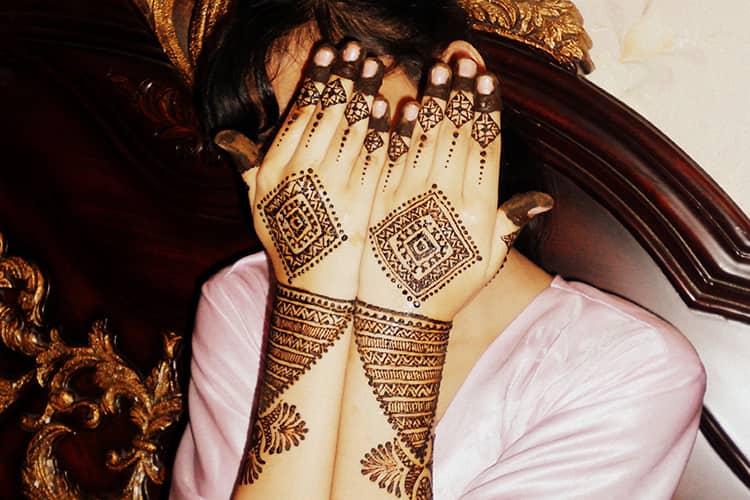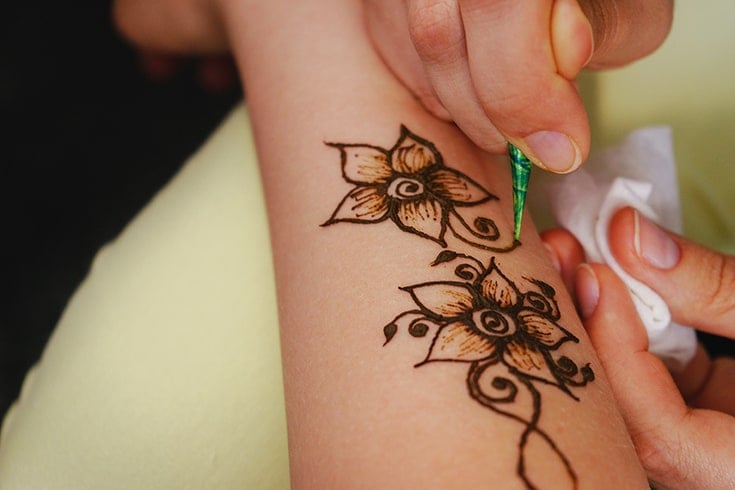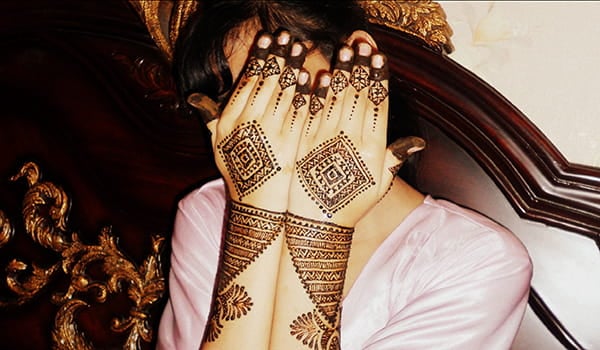Are you confused between Mehndi and Henna? These two terms are known to many people, but they are often mistaken. Henna and Mehndi are two similar terms closely related to each other. In India, Mehndi is known as henna while the Arabic word for henna is Mehndi. You may come across definitions saying mehndi is the art of henna tattoo. So, we can safely say that mehndi is the answer of henna painting method, while henna is used for creating mehndi. And because of this reason, henna and mehndi are used as the same.

Now let us learn the definition of mehndi and henna separately and the difference between them.
What is Mehndi?
Mehndi is traditionally used for painting feet, hands, and body using a paste made from dried, powdered leaves of henna plant. When dried after application, it leaves behind a deep red or dark brown tint depending on several factors. To deepen the color, most people use lemon, tea, or coffee, and essential oils.
The origins of Mehndi can be traced back to Northern Africa and Middle East over 5000 years. It has been used for ceremonial and artistic uses.
What is Henna?
Do you know where henna originates from and what is it exactly? Read ahead to learn everything you need to know. Henna is a flowering shrub that has several uses. Its’ flowers have a sweet fragrance and are also used for making perfume. The leaves are dried and made into fine powder which is then used for dyeing clothes, hair, and skin (temporary tattoos). The plant is also known for treating several skin conditions.
It belongs to the species of Lawsonia genus and is known by different names around the world. Its scientific name is Lawsonia inermis.
[sc:mediad]
You can recognize a henna plant by its small pink and white flowers.
The henna bark, oil, and seeds are widely used for medicinal purpose. Its high content of nutrients and chemicals provide its hypotensive, anti-inflammatory, astringent, antibacterial, and antiviral effects.
How is Henna Different from Mehndi?
Let us now learn about the differences between mehndi and henna:
Mehndi:
- Mehndi is often used for describing Henna in Urdu or Hindi. The word originates from the Sanskrit term ‘mendhika.’ It is referential for the similar dye used for painting hair, hands, and fingernails.
- Mehndi is also a part of custom performed a day or two before Indian Marriage. The bride’s hand is covered with henna and turmeric paste.
- It is also used in several festivals like Diwali, Eid, Karva Chauth, Bhai Dooj, Teej, and Purnima.
- Mehndi is becoming popular in the Western culture too. It is used as temporary tattoos which come off after few days.
- Application of mehndi is known to calm the body in various ways. It cools down the body, calms tense nerves, and reduces stress levels. This is the reason why it is applied on feet and hands.

Henna:
- Henna is a temporary dye derived from henna tree.
- It is a flowering plant and the species of genus Lawsonia.
- Henna belongs to the Lythraceae family.
- The term henna or hina is originated from hinna, an Arabic word.
- Henna is referred to a dye derived from the plant. It is popularly used as temporary tattoo.
- One of the notable differences between henna and mehndi is that the former is used for treating skin conditions. It is used for protecting skin against inflammation and infection. It is also used for the application of wounds, burns, and scrapes.
- Apart from temporary tattoos, henna is also used for dyeing nails, hair, skin, wool, and leather.
- The color can vary from dark brown to orange red.
- Henna has been used since ancient times to dye several things.
- It is also used as a medicinal herb. Henna oil is used for treating sleep disorders like insomnia or chronic anxiety issues. You may add few drops of the oil to your pillow or a glass of warm water to get a restful sleep. The oil is known to soothe the mind and body.

Side effects of Mehndi and Henna:
Before using any form of traditional dye, it is best to check with a beauty consultant or herbalist for best use. Several varieties of mehndi and henna are safe and do not have harsh chemicals. But the ones available at commercial stores like black henna may have potential allergenic ingredients. This can lead to skin rashes and discomfort.
In addition, hair dyes that are henna-based may not with safe for those with sensitive skin. So you must read the instructions carefully before proceeding to use.
These are the differences between mehndi and henna. We hope you are now clear about the two synonymous terms.
